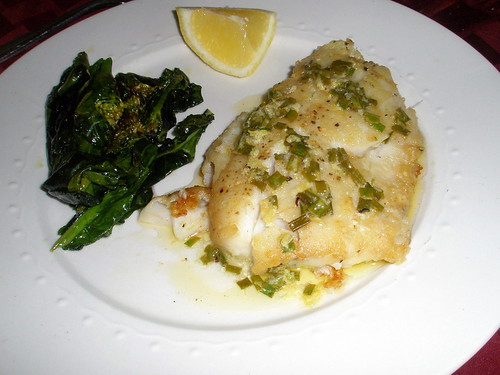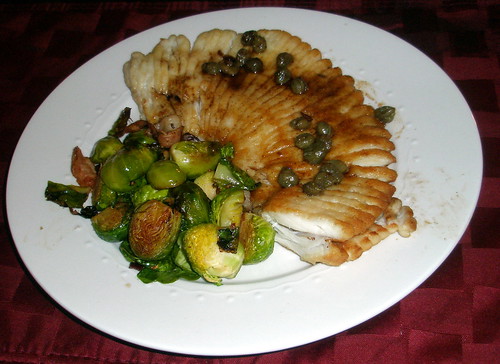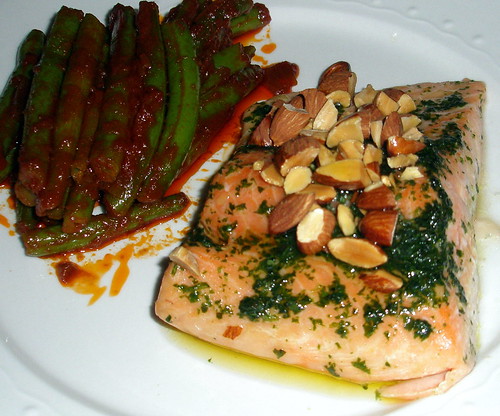On my
recent shopping trip to Eataly, I picked up a can of salt-packed anchovies. Whole salt-packed anchovies are to oil-packed anchovy fillets what jarred oil-packed Italian tuna is to domestic water-packed canned tuna. Sure, they cost more and take a bit more effort to cook with, but the taste of salt-packed anchovies is levels above their oil-packed brethren.
This simple pasta should appeal even to the anchovy-haters, of which we all know there are many. While the anchovy flavor is apparent, the dish is not fishy. Combined with the caramelized onions, olive oil, and toasted breadcrumbs, the anchovies make a light sauce that is much more than the sum of its parts.
It does take some time to fillet the anchovies, but the rest of this dish can be put together in under 30 minutes. Unfortunately, as I had few anchovy-loving friends and did not want to rub my smelly anchovy fingers on my camera, I do not have any photos of filleting the fish, but it's quite easy. First, rinse the salt off of each anchovy. Then soak them in water for about 20 minutes, changing the water few times as they soak. Rinse them off and run the blunt side of a paring knife along each side of the fish to scrape off any scales. Then, pluck off all of the fins. Use the paring knife to butterfly each fish. Pull each fish gently at the tale and pull out the backbone in one clean sweep. Finally, cut each side of the fish into 3 even fillets. Then you can relax as you throw together the rest of the dish.
Spaghetti with Anchovies and Caramelized Onions
Serves 4
Ingredients:
- 1 lb. spaghetti
- 1/4 tbsp olive oil
- 2 yellow onions, thinly sliced
- 3 cloves garlic, thinly sliced
- 1 tbsp crushed red pepper flakes
- 6 salt-packed anchovies, filleted
- 1/4 cup parsley
- 1/2 cup toasted breadcrumbs
Directions:
- Bring a large pot of salted water to a boil.
- Heat 3 tbsp olive oil in a large skillet over medium heat. Add the onions and cook, stirring occasionally, until they are very soft and golden brown in color, about 20 minutes.
- Add the remaining olive oil to the skillet and increase the heat to medium-high. Add the garlic and red pepper flakes to the pan and cook until the garlic becomes very fragrant, about 1 minute.
- Add the anchovies to the skillet. Cook, stirring constantly, until the anchovies have completely broken down into the sauce, 3 to 5 minutes. Reduce the heat to low.
- Cook the spaghetti in the boiling water until al dente.
- Stir the pasta and the parsley into the sauce.
- Serve the pasta in bowls, topped with a few spoonfuls of the toasted breadcrumbs.






















